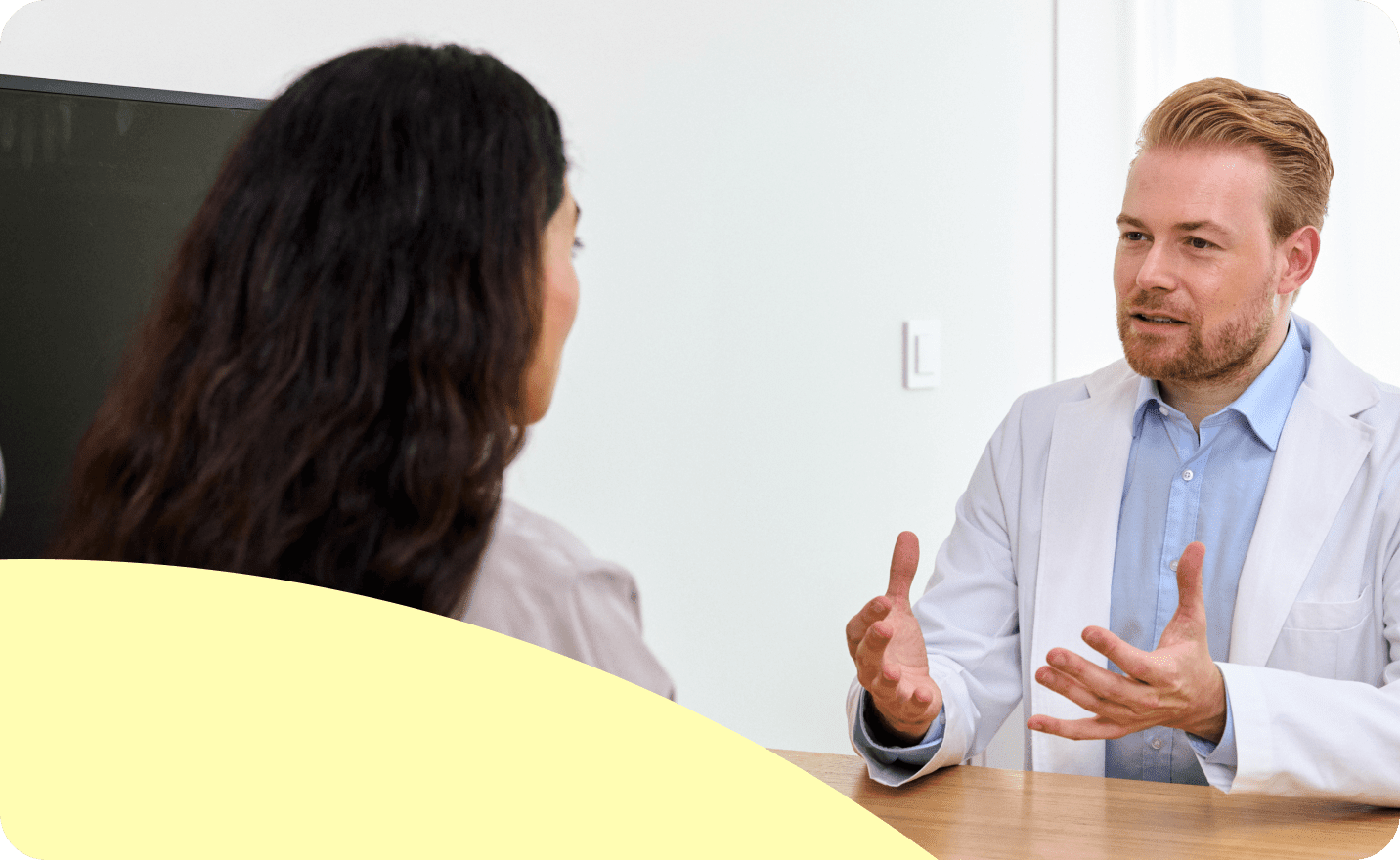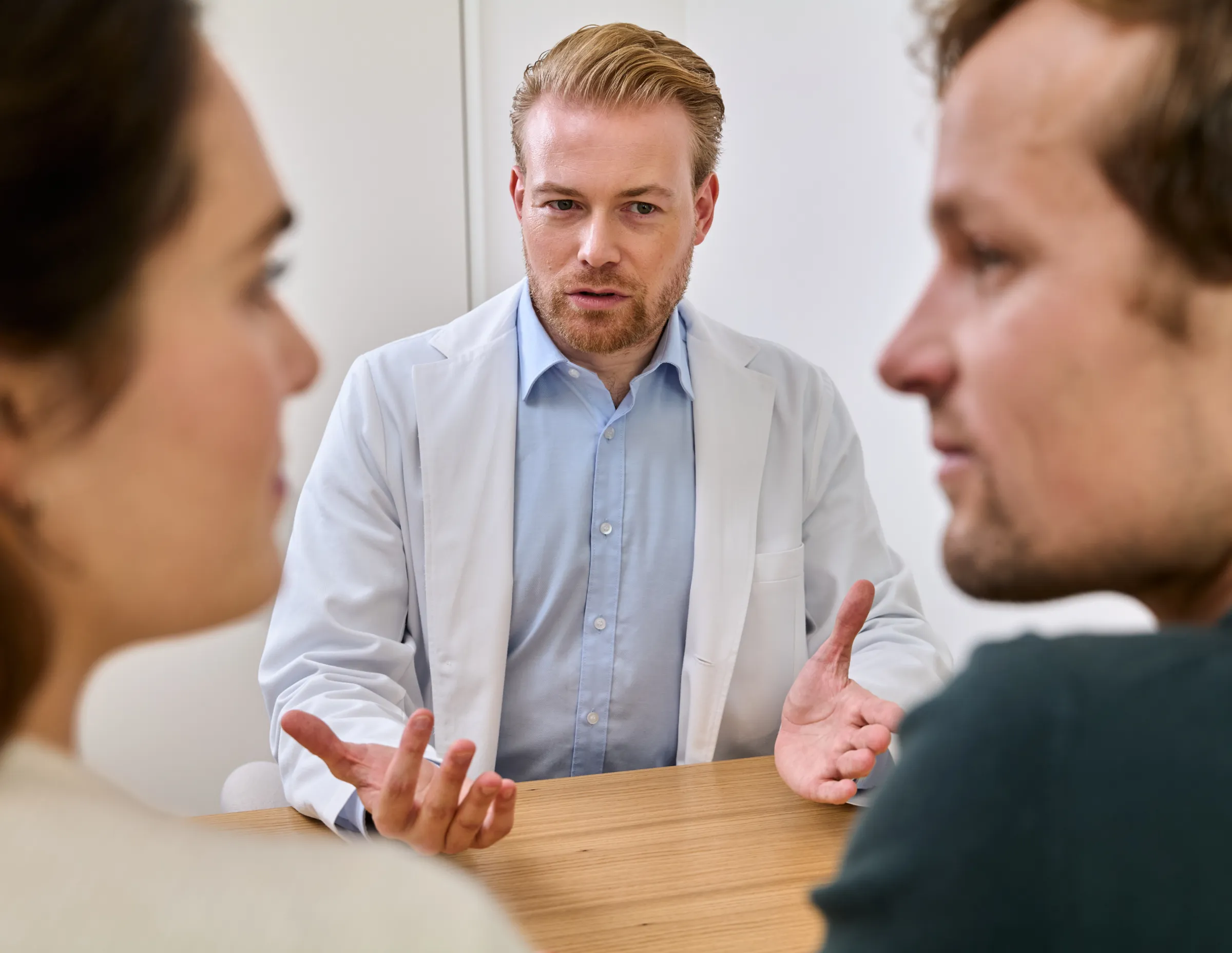Read this latest statistics article to learn how endometriosis affects over 176 million women worldwide.
Endometriosis is a painful disorder that affects about 10% of women who are within their reproductive age.1 It's characterised by the growth of tissue found in the uterus lining outside its cavity, causing severe pelvic pain, particularly during menses (menstruation).
We've put together the latest statistics regarding endometriosis and consulted our medical experts to bring you the most up to date knowledge.
Medical Contributors to this Article
:quality(75))

Key endometriosis statistics
- There are 176 million women worldwide who have endometriosis, which accounts for 10% of the global female population, and up to 30-50% of women with infertility may have endometriosis.3-4
- Approximately 1.5 million women are impacted by endometriosis, a comparable amount to those affected by diabetes.5
- Endometriosis patients with chronic pain endure a significant amount of burden from its cumulative effects. As much as 70% live with unresolved discomfort that significantly affects all aspects of their quality of life. Research indicates that those who have endometriosis also experience an elevated occurrence of comorbidities compared to control groups.6
- Among women who desire to maintain their ability to reproduce, the prevalence of recurring pain symptoms for surgical management is 44%, while it's 53% with medical treatment.9-10
- According to a recent meta-analysis that covered research conducted on women with endometriosis, over two-thirds (68%) of them experienced mild or high psychological stress. Hence, the researchers suggested an interdisciplinary approach to treatment that should focus not only on pain management and potential infertility but also on providing mental health support.8
The prevalence of endometriosis in women
Millions of women globally are affected by endometriosis. Despite its wide-reaching impact on health outcomes, misdiagnosis or neglect commonly characterises handling cases related to this disease.
- There are 176 million women worldwide who have endometriosis, which accounts for 10% of the global female population, and up to 30-50% of women with infertility may have endometriosis.3-4
- Approximately 1.5 million women are impacted by endometriosis, a comparable amount to those affected by diabetes.5
This increasing prevalence among women may typically be because there is no cure for endometriosis. Prof. Dr. Med. Gabriel Schär, our medical advisor for Gynaecology and Obstetrics, says,
“The condition is notably complex and tends to worsen over time, accompanied by escalating severity of symptoms.”
Researchers at Oxford University conducted a global study showing how endometriosis is rooted in genetics. By analysing DNA from 60,600 women with endometriosis and 701,900 without the condition, a study revealed that there is a common genetic foundation between endometriosis and pains such as migraines, back pain, or multi-site discomfort.
Such revelations could pave the way for developing novel non-hormonal remedies to treat aches; alternatively, reconfiguring existing therapies can also be explicitly applied to treating endometriosis-induced discomforts.7
Dr. Dirk Wallmeier, our chief medical advisor, shared that no developmental treatments exist for endometriosis. In some severe cases, surgery is a patient’s best option.
Women typically take 7 to 10 years before getting diagnosed with this disorder, despite it being prevalent.
Patient factors like shame, uncertainty in distinguishing normal from abnormal symptoms, and stigma, as well as physician-related causes, including the normalisation of symptoms, together with the absence of an unconstrained diagnostic exam, were recognised as rationales for the delays.8
It’s important to understand how endometriosis affects the livelihoods of women and their ability to conceive naturally with endometriosis.
What comorbidities and risks are associated with endometriosis
Several autoimmune diseases, namely systemic lupus erythematosus, Sjögren's syndrome, multiple sclerosis, rheumatoid arthritis, and inflammatory bowel diseases (Crohn's disease and ulcerative colitis), alongside coeliac disease, may pose a higher risk for women with endometriosis.
Despite not being an autoimmune disorder, a review found nine studies demonstrating this correlation.16
- Although peritoneal is the most common manifestation of endometriosis, ovarian involvement occurs in 17-44% of patients and presents as the formation of ovarian endometriomas - cystic lesions filled with dark fluid from the tissue lining of the uterus.6
- The most severe form affects around 20% and is called deep infiltrating endometriosis. While these subtypes are believed to have distinct pathogenesis mechanisms, no confirmed aetiology (the cause of a disease or condition) explaining all aspects has yet been identified for this disease.6
Endometriosis is characterised by cyclical hormonal changes driving the ectopic endometrial tissue's activity, leading to symptoms flaring up in tandem with the menstrual cycle.
As a result of this pain and inflammation pattern persisting throughout each cycle, those suffering from it experience a significantly reduced quality of life. Treatments primarily focus on inhibiting ovulation and suppressing menstruation to minimise hormonal stimulation that may cause these lesions' growth and effectively ease their symptoms.
Prof. Dr. Med. Gabriel Schär says, “The usual symptoms tend to occur in a cyclical pattern, meaning they happen along with the female menstrual cycle, so they consistently return almost every month, and the level of pain experienced is pronounced and easily noticeable.”
Although Endometriosis is a non-neoplastic invasive disease, it has been found to have a possible link with ovarian cancer. Studies show that endometriotic lesions may develop into clear cell and endometrioid ovarian cancers through molecular evidence.6
This correlation remains disputable and requires further research on the underlying mechanisms involved in this progression. However, indications are suggesting an increased risk of developing ovarian cancer for those diagnosed with Endometriosis - from 1.3% in females without the condition to about 1.8% among those who do suffer from it.6
Dr. Dirk Wallmeier, our chief medical advisor, says that endometriosis often co-exists with comorbidities such as diabetes. However, the risk of the endometriotic lesions developing into ovarian cancer is very slim.
The biggest concern is that women end up with psychological deficits such as depression, anxiety, and even stress. Dealing with long-term pain, even at times excessive pain, leads to women requiring psychological treatment.
In her report on the research, psychiatrist Ruta Nonacs, M.D., Ph.D. from Massachusetts General Hospital Center for Women's Mental Health, observes that there is undoubtedly a complex connection between endometriosis and depression. She proposes that women enduring chronic pain caused by endometriosis should undergo screening for depression and receive concurrent treatment to achieve optimal results.8
For the most part, we assume endometriosis is only contingent on the physical; however, we have noted that psychological factors must also be considered.
Did you know environmental factors may also affect endometriosis and infertility?
According to Dr. Dirk Wallmeier, our chief medical advisor, “It is assumed to some extent that environmental factors are responsible. As time goes on, infertility continues to increase, and we have more and more patients.”
Dr. Wallmeier also shares that there haven't been any new treatment methods for endometriosis. There are oral medications to treat mild symptoms, but surgery is the best treatment method for more serious cases.
- Among women who desire to maintain their ability to reproduce, the prevalence of recurring pain symptoms for surgical management is 44%, while it's 53% with medical treatment.9-10
Controlled prospective studies have shown no evidence linking endometriosis to recurrent pregnancy loss; additionally, there is no indication that medical or surgical treatment of endometriosis reduces the rate of spontaneous abortions.11
- Further examinations have indicated that pretreating stage 3 and 4 endometriosis with gonadotropin-releasing hormone (GnRH) agonists enhances IVF's probability of resulting in a successful pregnancy.12
- Additional possibilities for achieving pregnancy are intrauterine insemination (IUI), superovulation, and in vitro fertilisation (IVF). According to a case-control study, endometriosis occurrence or severity does not influence the success rate of intracytoplasmic sperm injection (ICSI) for pregnancies.12
According to Dr. Wallmeier, “On average, success rates vary between 25-40% progressively declining with an increase in age. In IVF and ICSI, we have the same success rates.”
- Out of the 486 laparoscopic cases of endometriosis studied over 10 years, it was observed that around 33% of all women required additional surgical intervention. It was also noted that those with more severe forms of the disease were at a higher risk for requiring repeat procedures.13-14
- Additionally, among these cases, 51% needed to undergo multiple surgeries due to various factors, such as having endometriosis present in sensitive areas like ovaries or fallopian tubes and adhesions in problematic regions, including pouches on Douglas’ folds or bowels.13-14
Women under the age of 30 who underwent surgery were found to have a significantly higher likelihood of requiring repeat procedures compared to those over the age of 30.
If you’re seeking alternatives to combating endometriosis, book a consultation with us.
Frequently asked questions
What are the typical symptoms of endometriosis?
Pain is the prevailing symptom experienced by those with endometriosis, and it can manifest in various ways. Women living with this condition may encounter a range of painful sensations, including:
- Menstrual cramps are exceedingly agonising and can intensify with time.
- Long-standing pain occurring in the lower back and pelvis.
- The sensation of discomfort that occurs either during or after sexual activity is typically characterised as a "deep" ache and distinct from the initial pain experienced at the vaginal opening upon penetration.
- Pain in the intestines.
- Discomforting defecation or painful urination whilst on your menstrual cycle may occur. There is a rare possibility of discovering blood in faeces and urine.
- If you experience bleeding or spotting outside of your menstrual periods, it could be due to a cause other than endometriosis. However, if this occurrence happens frequently, seeking medical attention is recommended.
- Digestive issues involving the stomach can manifest as diarrhoea, constipation, bloating, or nausea. Women may experience these symptoms, especially during their menstrual cycle.17
How does endometriosis cause health complications?
Although endometriosis growths are not cancerous, they can still result in complications.
During your monthly menstrual cycle, growths caused by endometriosis can expand and bleed similarly to uterine linings; however, since this occurs outside proper body channels, it may lead to inflammation and discomfort due to difficulties eliminating such tissues from your system.
The growths have the potential to enlarge further and give rise to complications, including:
- Excessive growths that spread over or infiltrate the ovaries can obstruct the fallopian tubes. This obstruction may lead to cyst formation due to the accumulation of trapped blood in the affected area.
- Swelling (inflammation)
- Scar tissue and adhesions can develop, which may bind your organs together. These conditions could trigger pelvic pain or infertility issues by making it difficult for you to conceive a child.
- Issues related to your digestive system and urinary tract.17
What are the common treatment options available for endometriosis?
Although there is no permanent solution for endometriosis, therapies are accessible to alleviate its symptoms and concerns. Consult your physician regarding the choices available for treatment.
- When the goal isn't conceiving, hormonal birth control is typically considered for initial treatment. The options may comprise:
- Hormonal birth control in the form of pills or shots is available as an extended cycle (few periods per year) or a continuous cycle (no period at all). They help to alleviate pain and prevent bleeding.
- The application of an intrauterine device (IUD) can alleviate discomfort and bleeding. While the hormonal variation safeguards against conception for a maximum period of 7 years, it may not offer lasting relief from endometriosis-related pain and blood loss.
The effectiveness of hormonal treatment is contingent on its consistent use, and it's most beneficial for women with mild pain or symptoms.
- If you are attempting to conceive, your doctor may recommend a gonadotropin-releasing hormone (GnRH) agonist. This medication halts the production of hormones responsible for ovulation, menstruation, and endometriosis growth. While this approach induces temporary menopause, it is also effective in managing endometriosis expansion while increasing the chances of conceiving upon discontinuing treatment as the menstrual cycle resumes thereafter.
Surgical procedure
- When hormonal treatment fails to alleviate symptoms or infertility is an issue, surgery is often the preferred option. The surgeon will target any affected areas of endometriosis and extract patches during the procedure. Hormone therapy may be resumed following surgery except when attempting to conceive a child.
- You may also attempt other treatments independently or with the aforementioned remedies.
- If you experience mild symptoms, your physician may recommend taking pain medication that can be purchased without a prescription. Such medications include Advil, Motrin (ibuprofen), or Aleve (naproxen).
- CAM therapies, including acupuncture, chiropractic care, and the use of herbs like cinnamon twigs or liquorice root, as well as supplements such as thiamine (vitamin B1), magnesium, and omega-3 fatty acids, have been reported by some women to provide relief from pain.17
Are you able to give birth to children if you have endometriosis?
Although numerous women with endometriosis do conceive, the process may be more challenging. Researchers believe that endometriosis could impact half of all females experiencing infertility issues.
The exact mechanism through which endometriosis can lead to infertility remains unclear. However, there are several potential explanations for this phenomenon:
- Endometrial patches may obstruct or alter the shape of the pelvis and reproductive organs, making it more difficult for sperm to locate the egg.
- Typically, the immune system defends the embryo against disease, but in some cases, it may be attacked instead.
- The development of the endometrium - where implantation typically occurs within the uterine lining - is not optimal.
People struggling with endometriosis in their fertility should consult a physician. The doctor may suggest treatments, including surgical options for extirpating the endometrial proliferation.17
What health risks come with endometriosis?
Studies indicate a correlation between endometriosis and various health disorders in women as well as their families. A few of the conditions implicated are:
- Allergic reactions, respiratory disorders such as asthma, and sensitivities to chemicals.
- Autoimmune disorders involve the body's immune system mistakenly attacking itself and can manifest as conditions such as multiple sclerosis, lupus, and certain forms of hypothyroidism.
- Chronic fatigue syndrome and fibromyalgia.
- Some types of cancer include ovarian and breast cancer.17
Sources
- Yale Medicine
- National Center for Biotechnology Information (NCBI)
- National Center for Biotechnology Information (NCBI)
- Fertility and Sterility
- Diabetes UK
- National Center for Biotechnology Information (NCBI)
- University of Oxford
- American Psychiatric Association
- Read by QxMD from Medscape
- Read by QxMD from Medscape
- Read by QxMD from Medscape
- Read by QxMD from Medscape
- Oxford Academic
- Taylor and Francis Online
- Oxford Academic
- Endometriosis.org
- Women’s Health







